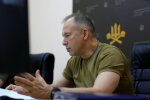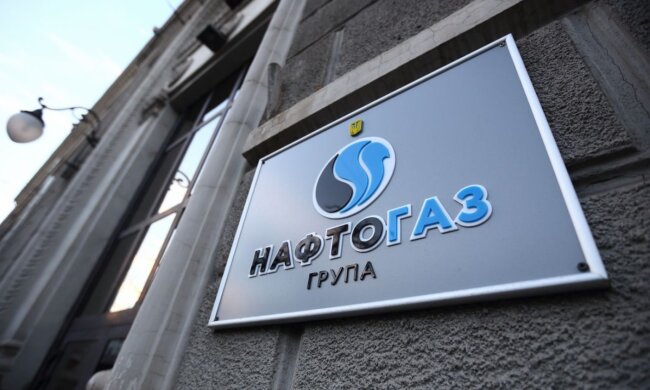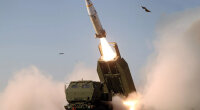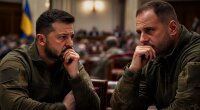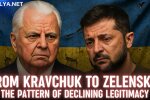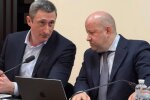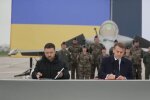I saw a post by my colleague Mykola Proskurskyi about how the high military command is trying to dismantle the International Legions of the Defense Forces, in which volunteers from many countries serve. Among them are my good friends who came to Ukraine to fight against rashism.
Let’s be honest. In the fourth year of the war, Ukraine, due to failures in mobilization, has faced an acute shortage of personnel in its units. There is a lack of soldiers along all sectors of the front. One of the key reasons for the critical situation on the front line, according to commanders, is the lack of reinforcements. In addition to mobilization itself, foreign volunteers from around the world are coming to help Ukraine. It was for them, at the initiative of the President of Ukraine, that the International Legions were created.
Back in 2014, I personally called for the creation in Ukraine of an equivalent to the French Foreign Legion to fight against Russian imperialism, which poses a threat to global security. The deeply reactionary ideology based on xenophobia and revanchism — rashism — is a danger to all free people on every continent.
At the end of February 2022, when Russian troops were approaching Kyiv, hundreds of foreign volunteers headed to Ukraine. They joined military units, and their main motivation was to defend a democratic country from Russian aggression. Already in the first days of March, it became clear that this movement not only needed to be supported but also to be given clear legal conditions. President of Ukraine Volodymyr Zelensky addressed the world and invited all willing individuals to join the Armed Forces of Ukraine.
Thus, at the initiative of the President of Ukraine in February and March 2022, the first battalions with foreigners were formed — the International Legions within the Ground Forces. For example, the fighters of the First International Legion in 2022 took part in the defense of Kharkiv region, and from September 2022 to July 2023 — in the counteroffensive in the Kharkiv direction. As part of the Defense Forces, they liberated Kupiansk, Petropavlivka, Berestove, Novoselivka, and fought near Stelmakhivka. After the counteroffensive, the legionnaires held the defense of the liberated territories. In 2024, they fought in the Bakhmut area, participated in the liberation of Andriivka and Klishchiivka, and later — in their defense and in the Maryinka-Vuhledar direction. The 2nd and 3rd International Legions followed a similar combat path.
In the second half of 2024, the Russians launched particularly aggressive rhetoric. Their systemic campaign to delegitimize the International Legion is built on dehumanizing foreign volunteers and portraying them as mercenaries, criminals, and outcasts. They pay special attention to every death of a foreign fighter, describing the circumstances in detail and allegedly citing financial motives for their service.
The International Legions are under constant informational pressure, especially from the Russian-speaking and partially Spanish-speaking information spaces. Striking examples include two powerful coordinated operations: "Berlin posters" and "drug cartels", aimed at undermining trust in the International Legion on an international level and discrediting global support for Ukraine.
For example, one of the Russian myths claims that members of drug cartels are being trained in Ukraine and later use their acquired skills in their own countries. However, as stated on the official website, "before taking on missions, International Legion volunteers undergo a selection process."
Here is one of the cases tracked by our experts from the Defense Research Cluster together with the KNEU Disinformation Counteraction Lab: the Mexican outlet Escenario Mundial published information citing an "unnamed source in Mexican intelligence" about CJNG cartel members allegedly training in Ukraine. This became an information trigger. Later, the publication tried to downplay the scandal and essentially retracted its own statement. But by that time, the fake had already spread through the information space via Russian-controlled pseudo-media disguised as Mexican. Then came: a) dissemination of the topic throughout Latin America; b) synchronization with media in the US and Europe — at least six major English- and Spanish-language outlets published nearly identical materials; c) Russian channels began actively using these Western sources to legitimize their narrative of the "criminalization of the Legion."
The second case is the already mentioned "Berlin poster" operation (September 30 – October 9). Individuals hired by the Russians placed provocative posters in Berlin with the slogan "Take revenge", an archival photo of German POWs from World War II, and a call to join the International Legion. The subsequent sequence of events: a) Berliner Zeitung published an article without proper verification of the source of the posters; b) Russian channels immediately picked up the story. Their speed may indicate prior monitoring and readiness for the information event; c) massive replication of a single narrative by Russian sources: "Ukraine uses Nazi rhetoric"; d) StopFake published a refutation, correctly identifying the posters as a provocation; e) unfortunately, Ukrainian media fell into the trap — for nine days they actively discussed the fake, trying to debunk it. Each such publication became an additional source for citation by Russian channels.
Amid this furious Russian campaign to discredit foreign volunteers, other strange things are happening. As Mykola Proskurnytskyi notes, the Ukrainian command suddenly decided to reformat the foreign legions and transfer them to the newly created Assault Forces.
I am far from idealizing the foreign legions. But these men and women show strong results. They are motivated and capable of performing complex tasks. And most importantly — the existing recruitment system for foreign volunteers through the International Legions ensured a steady inflow of new fighters into Ukraine’s Defense Forces. We’re talking about thousands of people. When domestic mobilization is stalling and TCCs (military enlistment offices) are being cursed in every neighborhood, is it wise to destroy a mechanism that provides manpower for the front?
These unclear actions of our command have already affected the inflow of foreign volunteers. For instance, the First International Legion’s LinkedIn page has not updated its vacancies for six months.
Together with the legions, the entire system of working with foreigners in Ukraine — built on experience, mistakes, and blood, and proven effective by the fourth year of the war — may be destroyed. And all of this could be lost in the near future.
Who wants to stop this flow of human resources? The answer is obvious — the Russians. The question is what to do about it. There are enough publications on this topic in Ukraine, but they usually show a high level of positive feedback. The focus is on the human stories of foreign volunteers, their motivation, and integration into Ukrainian society. The main problem is the lack of a systemic communication strategy and coordination between media, which leads to episodic coverage instead of a constant presence of the topic in the information space.
As a volunteer who has long supported the foreign volunteer movement in Ukraine, I appeal to everyone whose management decisions affect this sphere, to my fellow volunteers and opinion leaders: help preserve the functioning recruitment system for foreign volunteers through the International Legions network. Do not allow it to be scattered and destroy the motivation of foreigners to join the AFU.
I am convinced that there is another way — not destruction, but improvement of this system and increasing the effectiveness of its units.

